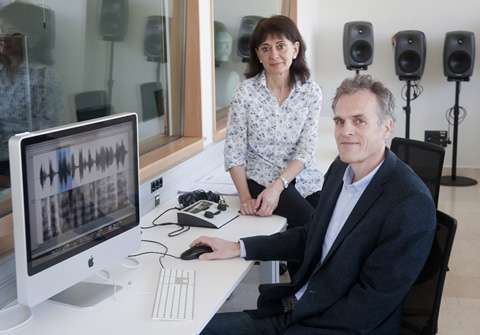Researchers develop multimedia corpus of noise-induced word misperceptions

Completely quiet conditions are actually quite rare. Most of the time, there is some kind of ambient noise present, including traffic, machinery, or conversations. Native speakers with a rich experience of a particular language and the context in which speech occurs have a great capacity to reconstruct part of a message obscured by noise. However, errors still occur at times. A group involving Dr García Lecumberri, Ikerbasque Research Professor Martin Cooke and collaborators have identified 3,207 "consistent" confusions. The confusions are said to be consistent because, in every case, a significant number of listeners agree. This type of confusion is extremely valuable in the construction of models of speech perception, since any model capable of making the same error is very likely to be undergoing the same processes as those in human listeners.
The research study involved more than 300,000 individual stimulus presentations to 212 listeners in a range of different noise conditions. The resulting corpus is the only one of its kind for the English language and is available at http://spandh.dcs.shef.ac.uk/ECCC/. For each confusion, the corpus contains the waveforms of both the speech and the sound, a record of what a cohort of listeners heard, along with phonemic transcriptions. Distinct types of confusion appear with some frequency in the corpus. In the simplest cases, it is clear that the noise masks some parts of the confused word, forcing listeners to suggest a word that best fits the audible fragments (e.g., "wooden" → "wood"; "pánico" → "pan") or to substitute one sound for another ("ten" → "pen"; "valla →falla"). In other cases, listeners appear to incorporate elements from the noise itself ("purse" → "permitted"; "ciervo" → "invierno"). Finally, the researchers find odd cases where there is little or no relation between the word produced and the confusion ("modern" → "suggest"; "guardan → pozo"). In these cases, the interaction of the speech and noise signals is complex, and therefore interesting.
Dr García Lecumberri says, "These studies help to reveal the mechanisms underlying speech perception, and the better we understand these processes, the more we can help at a technical and clinical level those listeners who suffer hearing and speech comprehension problems." The group has also elicited a similar corpus for the Spanish language that can be accessed from the same web page. "There are similarities and differences between Spanish and English confusions: Spanish is a highly inflected language, leading to more confusion in word-final position; English has a larger number of monosyllabic words and a richer set of word-final consonants, leading to more substitution-type errors in this position." However, both languages show a similar pattern of confusion types in noise, with some sounds surviving better than others.
More information: Ricard Marxer et al, A corpus of noise-induced word misperceptions for English, The Journal of the Acoustical Society of America (2016). DOI: 10.1121/1.4967185

















